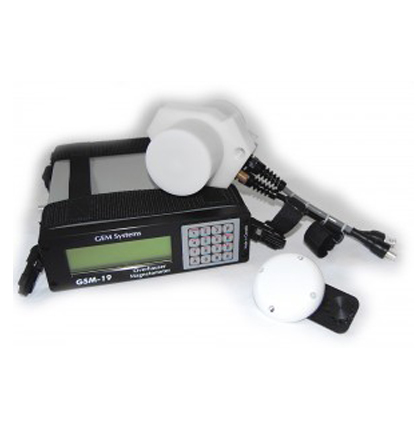





Compared with the GSM-19G Gradiometer, the GSM-19 Overhauser total magnetic field magnetometer has higher proton magnetic force measurement accuracy and better data quality.
●Mineral exploration
●Environment and Engineering
●Pipeline detection
●Detection of unexploded ordnance
●Archaeological exploration
●Volcanology and seismic research
The GSM-19 Overhauser magnetometer can measure both the total magnetic field and the magnetic field gradient. Overhauser technology offers a unique blend of physics, chemistry and engineering. The complex system design and rich experience in the field of magnetism help distinguish it from other quantum magnetometers.
The Overhauser magnetometer is essentially a proton preceptor magnetometer - in addition to generating a higher order of magnitude of sensitivity. The Overhauser effect occurs when a special liquid (with unpaired electrons) combines with hydrogen atoms and is then exposed to the secondary polarization of a radio frequency (RF) magnetic field. Unpaired electrons transfer their stronger polarization to hydrogen atoms, thereby generating a strong precession signal, which is highly suitable for high-sensitivity total field measurements. Compared with the proton precession method, the generation of radio frequency signals also minimizes power consumption. The radio frequency exceeds the bandwidth to spin in the signal and they do not damage the sensitivity, that is, polarization and signal measurement can be carried out simultaneously, which can achieve faster, sequential measurement and increase the sampling speed. Therefore, the measurement can be nearly continuous.
There are the following series of products:
GSM-19 overhauser magnetometer
GSM-19W overhauser Magnetometer (Walking Mode)
GSM-19G overhauser magnetometer (Gradiometer)
GSM-19GW overhauser Magnetometer (Walking mode + Walking mode)
Sensitivity: Standard GSM 19 0.022 nT@1 Hz
GSM 19PRO 0.015 nT@1 Hz
Resolution: 0.01 nT
Absolute accuracy: 0.1 nT
Dynamic range: 20,000 to 120,000 nT
Gradient tolerance: up to 10,000 nT/m
Sampling time: 60 +, 5, 3, 2, 1, 0.5, 0.2 seconds
Operating temperature: -40°C to + 50°C